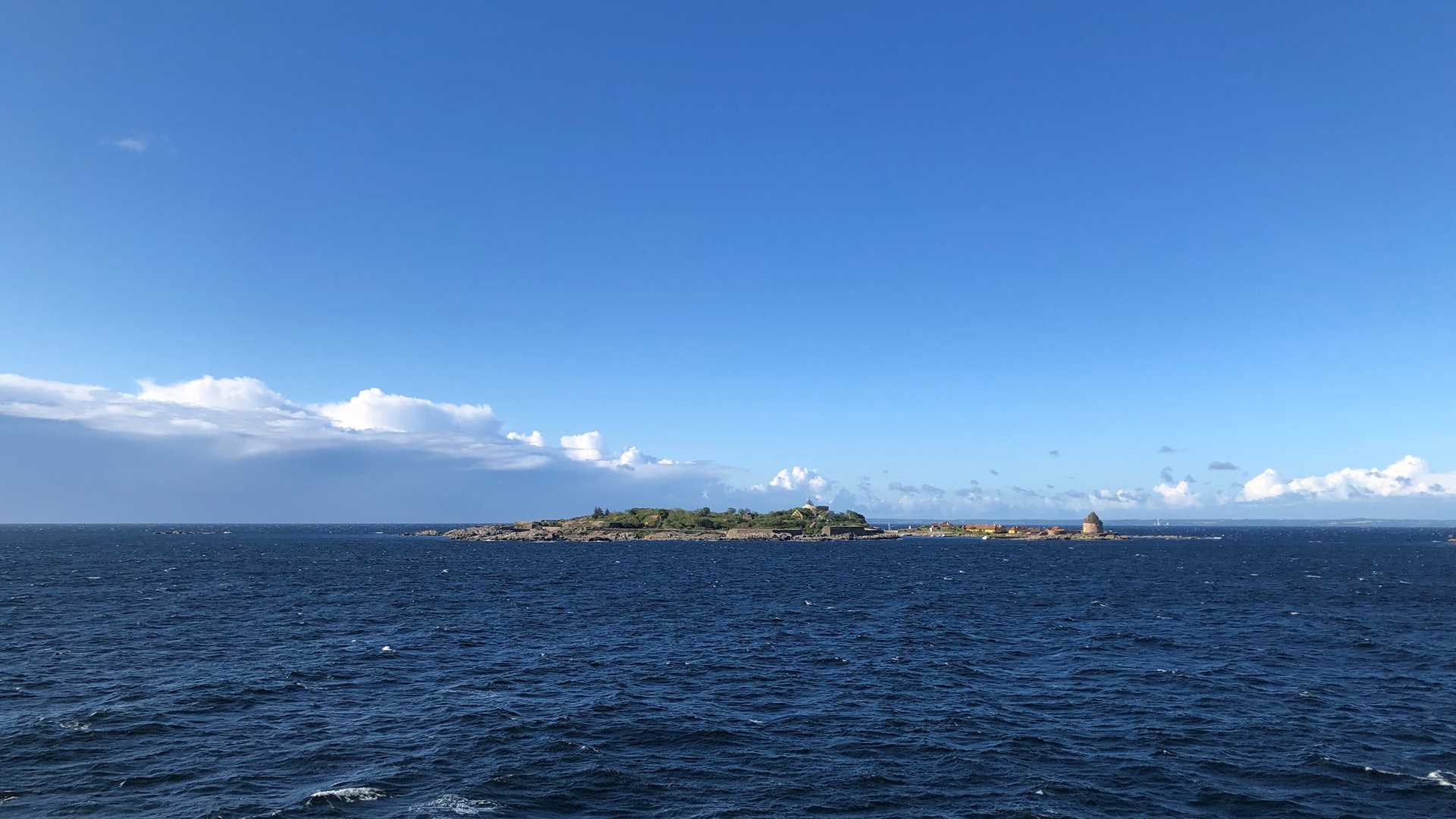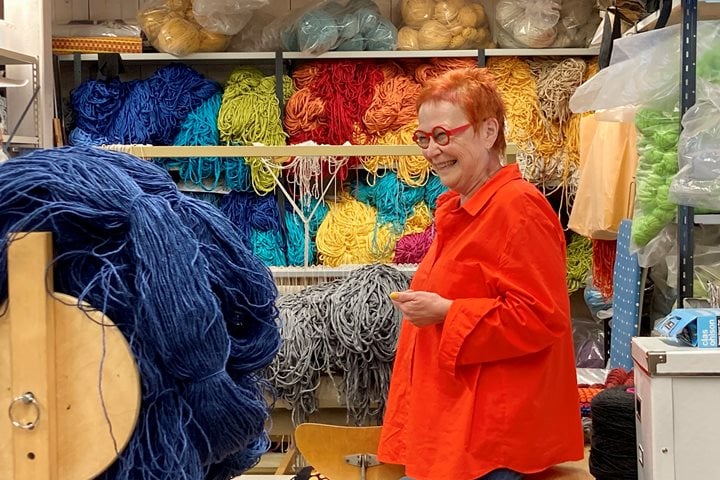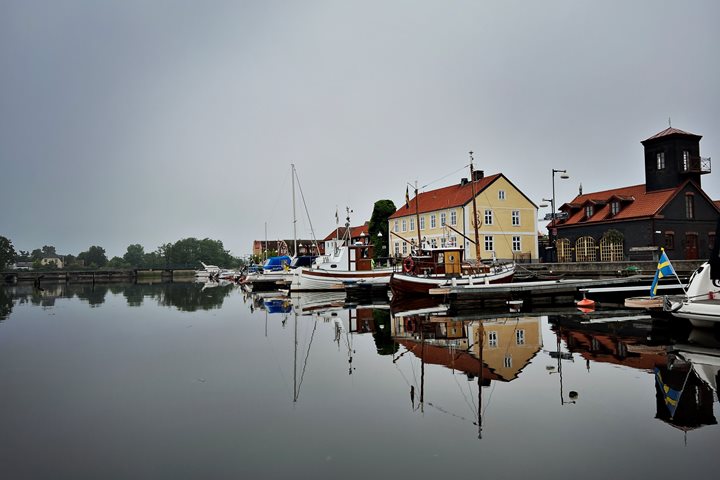A crisp, sunny, and windy day with choppy seas in the morning. Only a select group braved the spray and disembarked for Christiansø–or ‘Christians Island.’ This is a jewel: a jumble of two small inhabited islands amidst a clutch of granite rocks, inhabited by gulls, eider ducks, swallows, and, occasionally, seals.
The main islands are straight out of a picture book: sturdy fortifications, a gentle hotel, a police station, yellow houses with red tiled roofs, pretty gardens, and an astonishing array of wildflowers everywhere. You would expect Pippi Longstocking to pop up at any minute.
It’s more than that, of course. Christiansø was a fortress, from which the Danes harassed the Swedes and whomever else passed through the narrow straight between Christiansø and the larger island of Bornholm. The Swedes struck back, and so did the British–although their commander, Lord Nelson, famously remarked that only a fool would attack a fortress with a ship.
The basis of the islands is granite, and much of the fortifications were built with that. There is a small quarry where prisoners worked at the hard stone. And when the wars were over, the Danes used the islands as a prison. One famous Dane, Johan Jacob Dampe, spent 15 years here, exiled for revolutionary (democratic) politics in the early 19th century. The cell block–eight heavy iron doors–is still intact, and Dampe’s sparse room is impressively empty. The other cells are now used to house temporary workers on the island (something we didn’t realize until we gingerly opened a cell door).
The ferry from Bornholm arrived at Christiansø at 11.00, so we had the place to ourselves–a few sleepy tourists, perhaps, one or two birdwatchers. The island has two sturdy defensive towers, the Little One and the Big One. Both house a museum of sorts–attractive displays of Christiansø’s violent history, local fishery things, pictures of poor Dampe’s travails, but also a contemporary art installation, and a nice show of birds, both photographed and stuffed.
After lunch, on to the big island: Bornholm. The wind still not in our favour, National Geographic Explorer found a quieter landing spot, the village of Nexø on the south coast of Bornholm. From there, buses took us to one of Bornholm’s most intriguing monuments, the round church at Osterlars. There’s nothing that compares to that, really–apart from the other three round churches on Bornholm. This is a medieval structure–white, plump, and solid with huge buttresses. The church was built in the 11th century as a defensive tower for the local community, in which they would find refuge from Baltic pirates. This then became their church–nothing like other churches: a small round space, with a formidable structure; the altar was almost a sideshow. Around that inner space is a wonderful 14th century fresco cycle of Christ’s birth and Passion–with a rather bizarre view of Judgment and Hell at the very end. Amazing to see how after thousands of years of pagan worship, Christianity arrived on Bornholm and took hold, literally, in the ancient structures of the community, but also in their imagination.
In Gudhjem, we were received at the Melsted Farm, an impressive courtyard where the farmer’s house is still as it was in the late 19th century–cast iron stoves, elegant furniture in the winter salon and the summer rooms, lots of beds, a grand kitchen. In a new building, a devoted Danish chef explained how the farm plays a key role in keeping Bornholm’s culinary culture alive, and promoting new ideas, too. A wonderful system: local entrepreneurs help each other in finding local foodstuffs–anything from Bornholm milk for a particular kind of blue cheese to juniper berries for Bornholm gin. This is not just a Bornholm phenomenon; Denmark is a huge agricultural force, but it invests in its authentic food production, thereby strengthening local communities. It was heartwarming–and so was the honey schnapps we got to taste.







